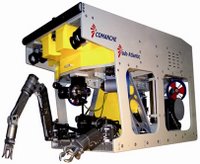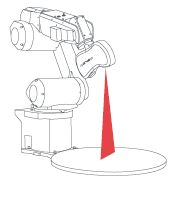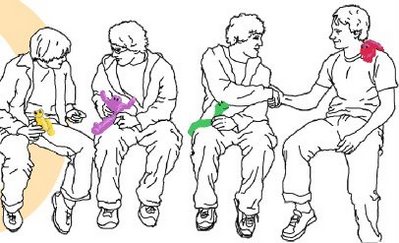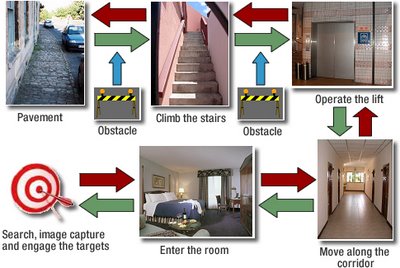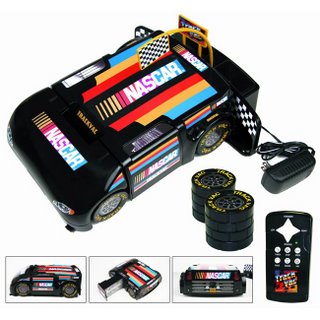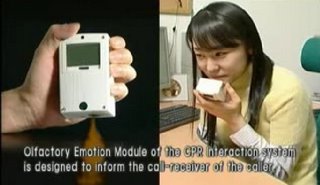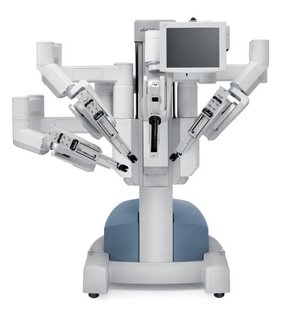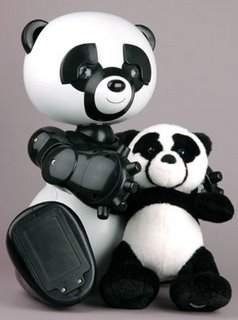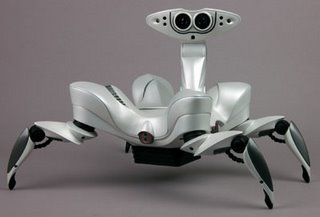There have been some very significant advances in robot technology and applications this year. There is strong belief that we are witnessing the beginnings of what will become an intimate and essential part of our lives. (See Bill Gates' thoughts in
Scientific American) The robot revolution has begun. We humans alive today will be both the benefactors and victims of the coming changes.
For a robot to be successful it must have the right balance of technology and utility. In selecting the Robot Of The Year for 2006 we looked for this balance.
Many of the achievements of robot science this year solved some extremely complex problems. There is no denying that the technology is advancing rapidly. However, in selecting a Robot of the Year we were looking for examples of robots that accomplished more than incremental change. We focused on robots that created a new future. We looked for robots that may have come from the future.
I guess our strict criteria is why the Robot Gossip Robot of the Year for 2006 does not come from a university research lab, government engineering project, industrial, electronics or software giant. The winner of Robot Gossip Robot of the Year for 2006 was created by an artist.
Robot Gossip Robot of the Year 2006
The Robot of the Year is
Beggar (Zicar) by Slovenian artist
Saso Sedlacek. It
first appeared in Robot Gossip in January 2006
Beggar is described as “a robot for the materially deprived.” It is built from discarded computer parts for little or no cost. It is designed to attract and interact with people and beg for alms.

It is made from four personal computer boxes and uses CD drives for begging hands and a computer screen for its sad face.
There have been two of the robots built. The first was used in Slovenian shopping malls. The second, Beggar 2.0, practiced on the streets of Tokyo.
What makes the Beggar robot so notable is they way it combines so many of the functions for which robots are used and also brings the technology into the hands of the very common human.
Some of the functions of robots today that are fulfilled by Zicar are:
Automation- robots can replace people for boring and repetitive tasks.
Telepresence - the materially deprived owner of the beggar robot could actually operate more than one robot to leverage their efforts to more locations.

Perform hazardous and dangerous tasks - Robots are used to perform jobs where humans would be in danger. In this case the Beggar robot is stationed in an upscale mall where a human panhandler would be most certainly ejected or even arrested.
Extending human abilities - Robots are used for scaling. Generally this means geometric scaling like working on very small things inside living cells or on silicon microcircuits. Or scaling up to mine tons of ore or load cargo ships. In this case the scaling is more metaphorical. The robot extends the dignity of the beggar into the realm of the wealthy shoppers. The ‘importance’ of a homeless person is scaled up to the level of the well-to-do.

Most importantly, the robot Beggar mediates the relationship between people. Robots that form relationships with people or between people is the area where we will see the most exciting and challenging innovations for robots in the coming years. As robots move out of the factories and into our homes they will need to be able to understand and adapt to the human interface. The Beggar robot creates a more comfortable ‘user interface’ between the wealthy patrons at the shopping mall and the materially deprived person living on the fringe of society.
Congratulations to Beggar, Zicar, and to your architect Saso Sedalcek for your breakthrough creation for 2006 and your inspiration for robot designers for years to come.
Project PageMore picturesCheck back with Robot Gossip in the next few days for some honorable mention awards from 2006.
Labels: awards, telepresence

 download them from Roboteria yet. You must go to Amazon.com make the purchase. Just click "Go to Amazon.com" to find the video and download it.
download them from Roboteria yet. You must go to Amazon.com make the purchase. Just click "Go to Amazon.com" to find the video and download it.

